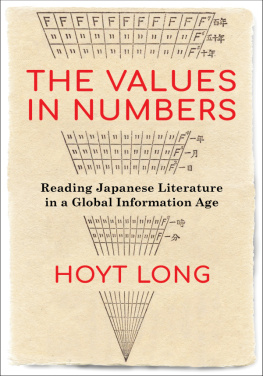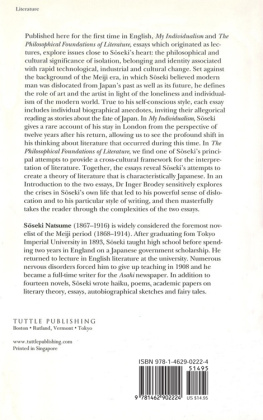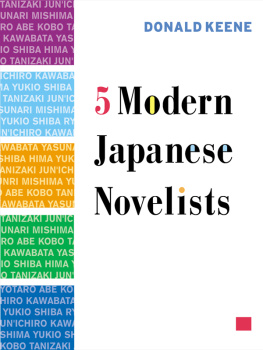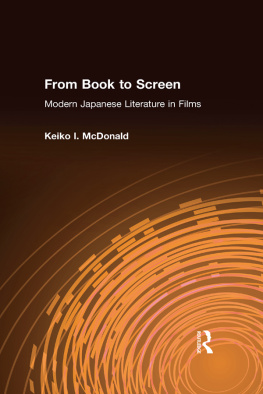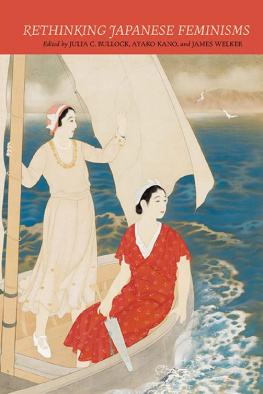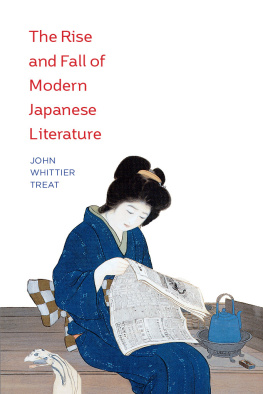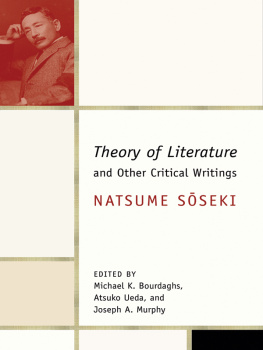Table of Contents
THE VALUES IN NUMBERS
The Values in Numbers
READING JAPANESE LITERATURE IN
A GLOBAL INFORMATION AGE
Hoyt Long
Columbia University Press
New York
Columbia University Press
Publishers Since 1893
New York Chichester, West Sussex
cup.columbia.edu
Copyright 2021 Columbia University Press
All rights reserved
EISBN 978-0-231-55034-5
Columbia University Press wishes to express its appreciation for assistance
given by the Wm. Theodore de Bary Fund in the publication of this book.
Library of Congress Cataloging-in-Publication Data
Names: Long, Hoyt J., author.
Title: The values in numbers: reading Japanese literature in a
global information age / Hoyt Long.
Description: New York: Columbia University Press, 2021. |
Includes bibliographical references and index.
Identifiers: LCCN 2020037666 (print) | LCCN 2020037667 (ebook) |
ISBN 9780231193504 (hardback) | ISBN 9780231193511 (trade paperback) |
ISBN 9780231550345 (ebook)
Subjects: LCSH: Computational linguistics. | Quantitative research. |
Japanese literature20th centuryHistory and criticism.
Classification: LCC P98.5.S83 L66 2021 (print) |
LCC P98.5.S83 (ebook) | DDC 410.285dc23
LC record available at https://lccn.loc.gov/2020037666
LC ebook record available at https://lccn.loc.gov/2020037667
A Columbia University Press E-book.
CUP would be pleased to hear about your reading experience with this e-book at .
Cover design: Noah Arlow
Cover image: Natsume Sseki, Bungakuron
(Theory of Literature), 1907, bk 1.
Contents
Introduction
Uncertainty in Numbers
Chapter One
Facts and Difference
Chapter Two
Archive and Sample
Chapter Three
Genre and Repetition
Chapter Four
Influence and Judgment
Chapter Five
Discourse and Character
Epilogue
Difference in Numbers
The history of thought is the history of its models.
FREDRIC JAMESON (1972)
Counting cases and deducing averages is not how a man accomplished in the knowledge of the world gets to the bottom of the motives underlying human actions in their extraordinary diversity.
B. J. I. RISUEO DAMADOR (1837)
On April 25, 1837, a debate was held at the Acadmie de Mdecine in Paris on the role of statistics in medicine. The stage had been set two weeks before when Jean Cruveilhier, who held a chair in the Paris Faculty of Medicine, called for a discussion on the matter. Medical academicians such as Cruveilhier had reason to be anxious about the use of statistical methods in medicine. The past few years had witnessed the emergence of new statistical ideas such as Simon-Denis Poissons law of large numbers and Adolphe Quetelets average. The former supposed that the ratio of an event to the whole varies less and less with the number of events measured, while the latter was built on the assertion that the greater the number of individuals observed, the more their individual particularities fade from view and give way to general facts.
When the debate finally got underway, it was the Spaniard B. J. I. Risueo dAmador who stole the show as the champion of antistatistical thinking. His signature rhetorical move was to portray his adversaries as having lost their way, trading one kind of medical certaintycarefully cultivated through a physicians observations and experiences with particular patientsfor the illusory certainty of counting. Illusory because, as he framed it, the counting and calculation of averages was a mechanical procedure that made the majority of cases equivalent in effect to the totality, denying access to human actions (and illnesses) in their extraordinary diversity. To use numbers was, simply put, a refusal to know variability in itself. Harking back to a tradition that referred to medicine as the art, and which believed medical knowledge was guided by certainties found in the sensations of its artists, Risueo insisted that the only kind of knowing able to grasp living variability was the individual genius of the artist, who encountered and observed each patient as a particular case. Should medicine go the way of numbers, it would not only turn this art into a lottery, but risk neglecting the minority that is obscured by averages and offer a false remedy to the inherent uncertainty of medical knowledge.
When it was their turn to respond, the defenders of numbers were quick to express their own reservations about the idea of a normal (average) anatomy or patient. But the problem was that the idea had been misinterpreted and misrepresented by detractors. When it was understood as a measure for identifying the range of variation in a set of observations, not a single value that erased variation, it became a useful conceptual tool. A physician could potentially generalize a treatment for patients whose symptoms fell within a given range, rather than treat every individual as absolutely unique. Few were convinced by such counterarguments, however. As the debate ended, Risueos colleague M. Double dealt a final blow to the numerists. Averages were but a theoretical fiction because clinical experience taught that no average anatomy or pathology, no average patient, truly existed. I am put in mind, if you will forgive the comparison, of a shoemaker who, having measured the feet of a thousand individuals more or less, comes up with an average and makes shoes only according to that imaginary pattern. The joke being, of course, that such a shoemaker is no shoemaker at all. Numbers, for the moment, were out for the count.
Todays bad reading may look like yesterdays bad medicine, but with hindsight it is hard not to conclude that time is on numeracys side. The debates of the 1830s look quaint in light of how entangled numbers are in medical practice today. Yet equivocation between the qualitative and the quantitative, which was also a moral debate about good medical practice, is rehearsed anew every time doctors wrestle with the impacts of new technologies on how the human body is constituted as an object of knowledge. In all of these cases, arguments for or against the value of numbers unfolded before the specter of new economies of information and new technologies, which were seen to be transforming, for good and ill, the institutions and infrastructures of knowledge production. Numerical thinking in its ever-changing guises acted as a flash point around which epistemological divisions between quantitative and qualitative modes of reasoning were either disrupted or entrenched. The cycle of debate repeats with every major infrastructural shift in the organization and production of knowledge, every technical innovation promising to transform how information is accessed. At each turn, rhetorical tropes are updated to bolster prescriptive claims about what it means to read literature.
The Values in Numbers is a book about this ongoing equivocation in literary studies as much as it is a contribution to its potential futures. I am interested in how we arrived at the current standoff and the ways in which it is both similar to and different from previous times. I pursue these interests through two distinct theoretical frameworks. The first is organized by a history of science perspective that looks behind the moralistic claims about

